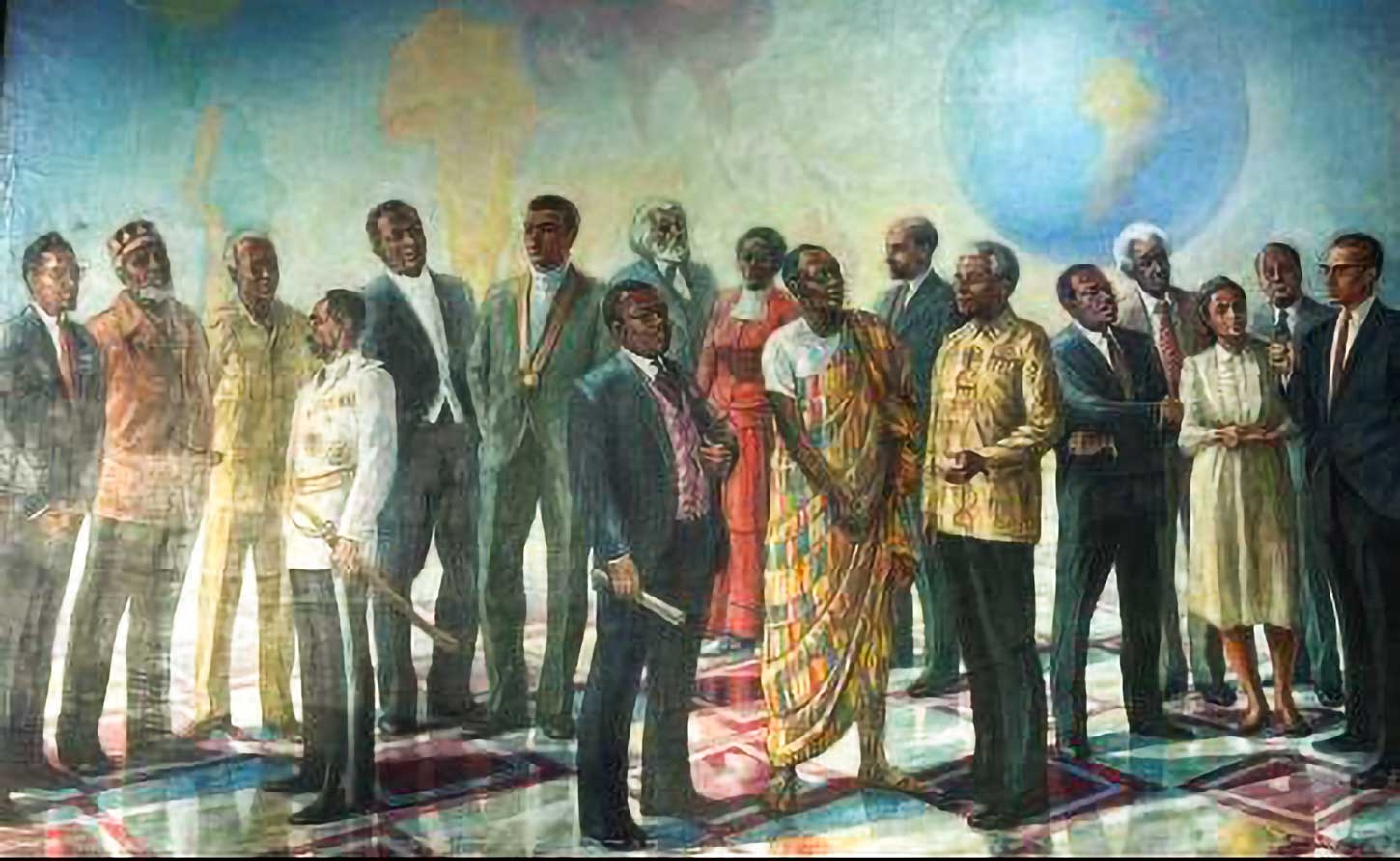JAMAICA | Former PM Patterson Donates Pan-African Mural to UWI on 90th Birthday

MONTEGO BAY, April, 2025 - In a powerful confluence of history, art, and legacy, former Prime Minister P.J. Patterson celebrated his 90th birthday on Saturday, April 12, by unveiling a monumental Pan-African mural at The University of the West Indies (UWI), cementing his lifelong commitment to regional solidarity and Black empowerment.
Born April 10, 1935, Patterson marked his milestone birthday with a gift to the nation rather than receiving one—a gesture characteristic of the statesman who has dedicated his life to public service as the Statesman-in-Residence of the PJ Patterson Institute for Africa-Caribbean Advocacy.
The impressive artwork—a reproduction of Barrington Watson's masterpiece "The Pan-Africanists"—now stands as the cornerstone of UWI's new Cultural Heritage Park, deliberately positioned along Mona's Ring Road among 14 historic ackee trees planted by enslaved Africans on the former Hope and Mona plantations.
This thoughtful placement creates a profound dialogue between living history and artistic commemoration, complementing an existing obelisk that memorializes the ancestors who once walked these very grounds.
"This is sacred space," declared Margaret Bernal, project director of the PJ Patterson Institute for Africa-Caribbean Advocacy, which donated the mural. "This mural connects the living trees, the bones unearthed here, and the mission of education and remembrance. It is part of a larger story of where we've come from and who we honour."
Watson's masterwork, three decades in the making, portrays 17 pivotal freedom fighters including Marcus Garvey, Harriet Tubman, Nelson Mandela, Martin Luther King Jr., W.E.B. Du Bois, Rosa Parks, Malcolm X, and Kwame Nkrumah. According to Doreen Watson, the artist's widow, the painting's genesis came from a profound moment of historical significance.
"From that moment, he knew he had to create something bold, a statement for Black people everywhere," she revealed at the ceremony, explaining that the inspiration struck when a scheduled meeting between Watson and US President Lyndon B. Johnson was abruptly cancelled following Dr. King's assassination. "That's how 'The Pan-Africanists' came to be. And P.J. Patterson truly loved this piece."
While the original canvas remains with the Watson family, the university received a high-resolution reproduction—a gift of legacy that now forms the first installation in what will become a full Cultural Heritage Park on the campus.
During the intimate ceremony, Patterson reflected on his heritage with characteristic humility, noting the remarkable coincidence that both he and Jamaica's first prime minister, Sir Alexander Bustamante, shared roots in Cacoon, Hanover, having attended school under the tutelage of Patterson's grandfather, William James.
"William James has produced two prime ministers who've reached this age," Patterson observed with a gentle smile. "And when you combine our years of service, we are the two longest-serving prime ministers to date."
While declining to deliver a formal address at what was ostensibly his birthday celebration, Patterson confirmed that UWI's vice-chancellor and the Mona campus principal have approved plans to expand the Cultural Heritage Park, with the mural serving as its foundation stone.
"Your presence here symbolises the unity we need, not just in Jamaica, but across the Caribbean and the developing world," Patterson told friends and family in attendance. "I've been truly blessed, and for that, I give thanks."
The significance of the occasion was underscored by the distinguished attendance, including current Prime Minister Dr. Andrew Holness; Premier of the Turks and Caicos Islands, Charles Washington Misick; former Prime Minister Bruce Golding and his wife Lorna; as well as former Bahamas prime ministers Perry Christie and Hubert Ingraham—a gathering that reflected Patterson's enduring influence across the Caribbean political landscape.
The installation stands not merely as artwork but as a powerful symbol of black resilience, cultural identity, and Caribbean legacy—a physical manifestation of Patterson's own life's work connecting Caribbean aspirations with the broader Pan-African movement.
-30-

 En
En  Ar
Ar